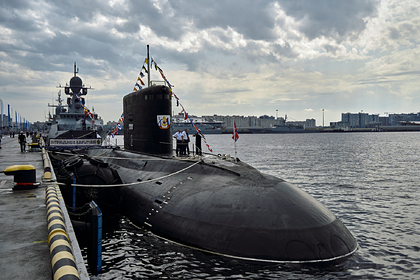It is very difficult to detect a diesel-electric submarine like the Russian project 636 submarine of the Varshavyanka type because of the nature of its acoustic signature or even the absence of such a signature, Kevin Noonan, a veteran of the US Navy (Navy), writes in the American edition of The Drive.
The publication says that in the period from the middle to the end of the Cold War, no one tried to directly track a diesel submarine using passive sonar, which, according to the expert, could "contribute to the terrifying awe that we feel today for diesel submarines."
The author admits that the US Navy's lack of its own diesel-electric submarines hinders the training of the US military to hunt for such submarines. Noonan claims that the modern onboard low-frequency sonar AQS-22 is able to identify almost any submarine.
According to the veteran of the Navy, the most silent among non-nuclear submarines is a submarine powered by lithium-ion batteries. Among the various options for detecting enemy submarines, the expert calls the study of their non-acoustic signatures, in which Russia and China are "light years ahead of us."
In June, the scientific director of the Krylov State Scientific Center (KGNC) Valery Polovinkin stated that among about 42 manifestations of the physical properties of the ship, polarities are one of the first places in research and implementation. In July 2019, he also said that Russia had begun developing and implementing a method for detecting a submarine by the trace left by it when moving in the water from the operation of the screws.
Ivan Potapov

